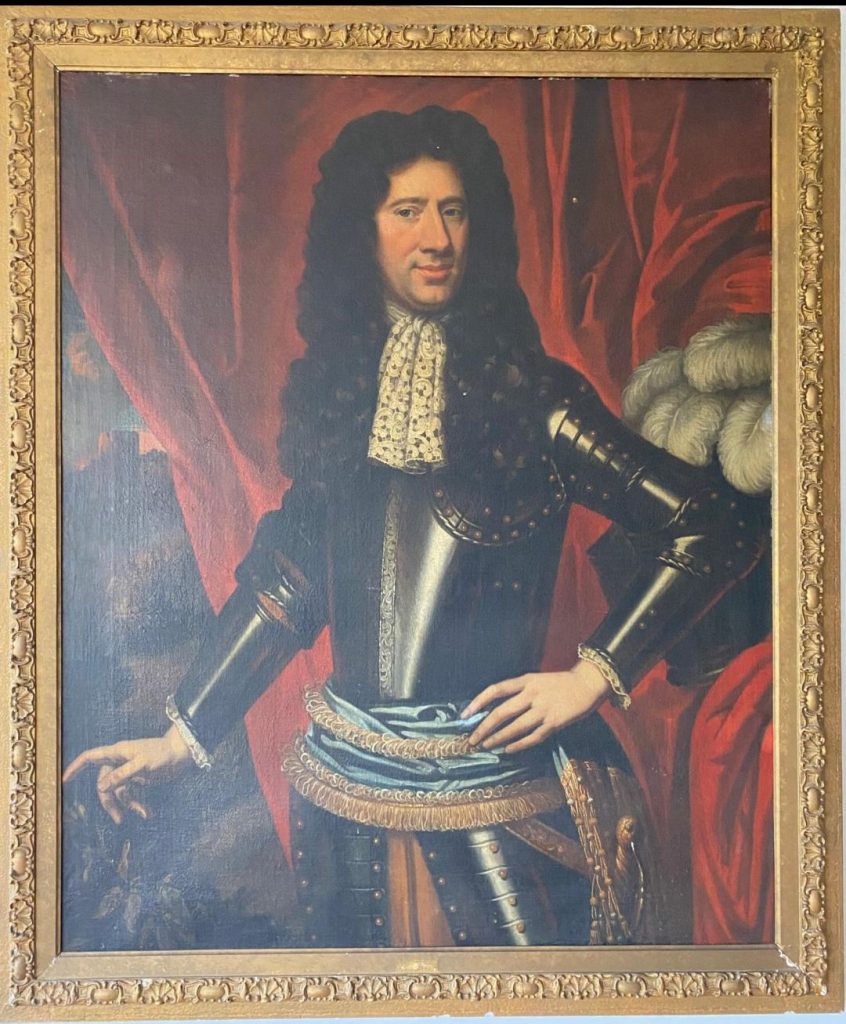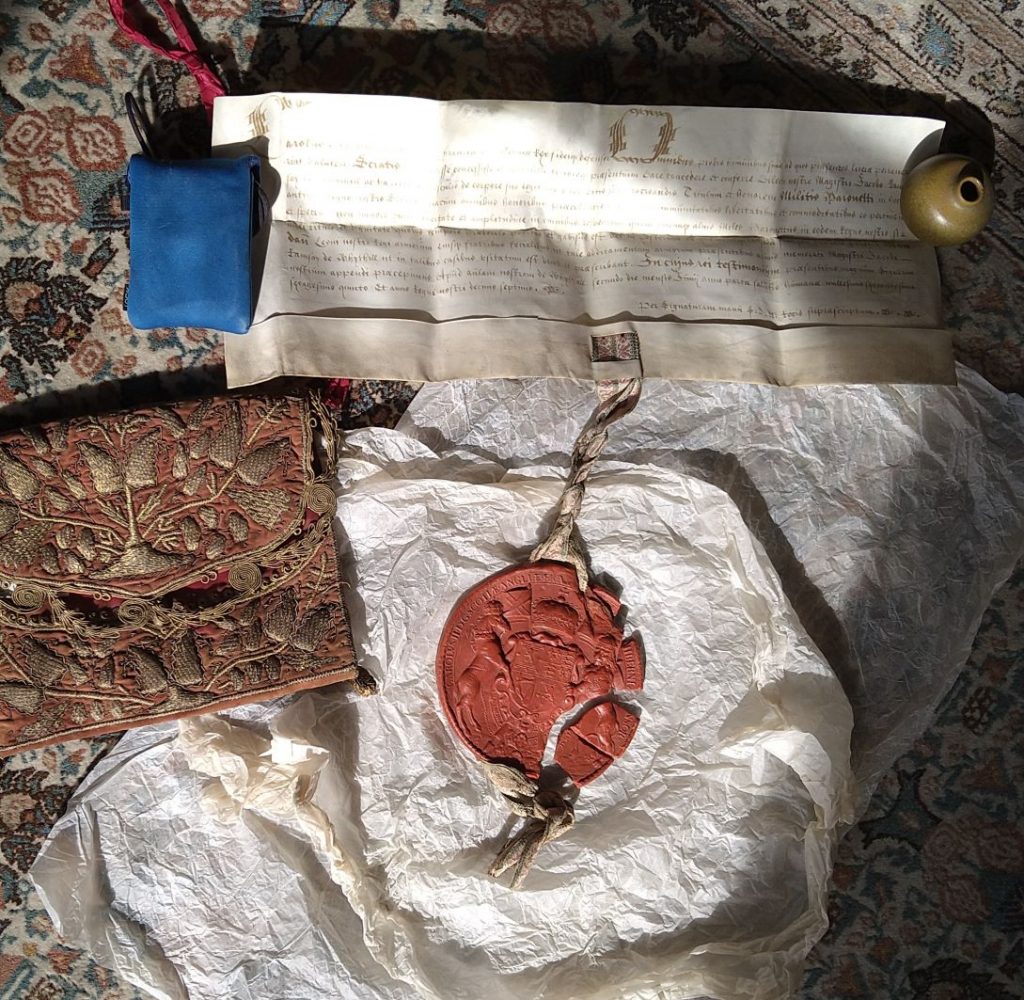Sir James Ramsay of Whitehill,1st Baronet

This fine portrait has pride of place in the collection. Long thought to represent his son, the personable Sir John, it clearly shows Sir James, wearing his finery and feathers as he processed through Edinburgh, preceded by macers and accompanied by trumpeters, to claim his Royal Patent and assume the title of Knight Baronet.
Who doesn’t love a show?
When James Ramsay contracted to marry Ann Baird on 18 February 1643, he listed as his friends William Earl of Dalhousie and his son Lord Ramsay, Sir William Douglas of Cavers, and Sir John Preston of Pennycuik. Among the witnesses are Sir John Hamilton of Orbiestoun, Lord Justice Clerk, and Sir Andrew Fletcher of Innerpfeffer among other luminaries of the age. Does this cast light on James’s decision to purchase a title a few years later? In 1665 King Charles II granted a Patent to Mr James Ramsay of Whitehill and the heirs male of his body, an honour “most deservedly conferred on him by His Majesty”. He had just loaned £600 to Parliament. The great seal is attached. Other papers include a receipt for 200 merks to Telfer Masmand, the Roxburgh herald and master painter to His Majestry, as the herald’s due for his patent as knight baronet. This artwork has vanished. Other payments to the Usher, the five trumpeters and macers have been preserved, testifying to the expense of this investiture ceremony.
The Investiture involved processing to Castle Hill to receive a handful of soil to represent Nova Scotia. Over the next few years, Sir James registered armorial ensigns at the Lyon office. He is representative of a generation of Scottish lawyers who acquired titles from the Crown and accumulated land around their country seat. As a medieval towerhouse 10 miles from Edinburgh, he may have used Whitehill as a secure base for holding deeds and papers deposited by his clients. In those dangerous times, he may well have used the embroidered saddle holster that is now a family treasure.
